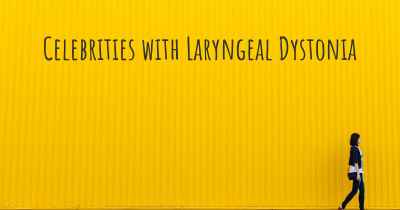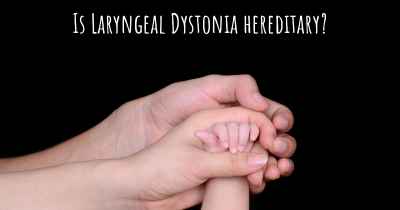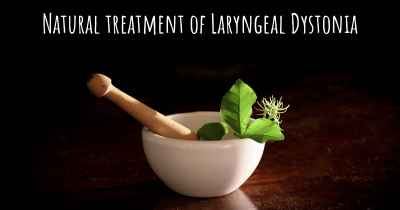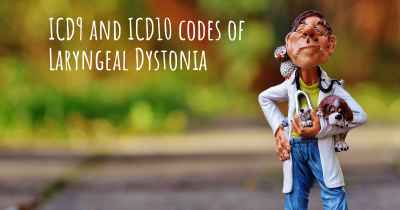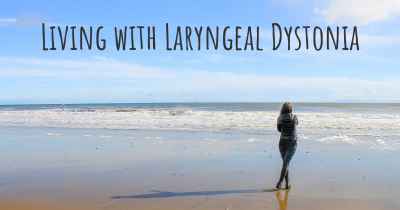What is the history of Laryngeal Dystonia?
When was Laryngeal Dystonia discovered? What is the story of this discovery? Was it coincidence or not?
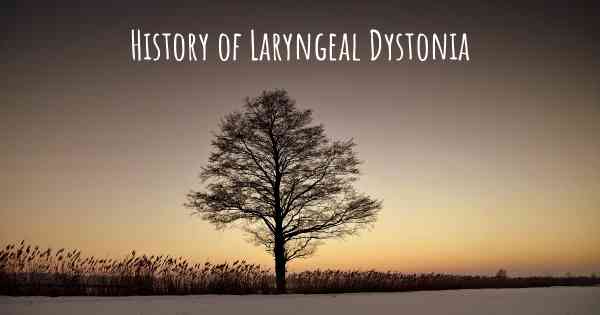
Laryngeal dystonia, also known as spasmodic dysphonia, is a neurological disorder that affects the muscles of the larynx, causing involuntary spasms and disruptions in speech. The condition was first described in medical literature in the late 19th century, but its history can be traced back even further.
Early Observations:
The earliest known observations of laryngeal dystonia can be found in ancient texts. Ancient Egyptian papyri dating back to 1550 BCE mention a condition called "stammering of the tongue," which is believed to be a reference to spasmodic dysphonia. Similarly, ancient Greek and Roman texts describe individuals with voice disorders characterized by strained and interrupted speech.
19th Century Discoveries:
It was not until the 19th century that laryngeal dystonia began to be studied in a more systematic manner. In 1871, the French physician Armand Trousseau described a case of a patient with a "spasmodic affection of the glottis," which is now recognized as a form of laryngeal dystonia. Trousseau's observations laid the foundation for further research into the condition.
20th Century Advancements:
In the early 20th century, several notable advancements were made in understanding laryngeal dystonia. In 1919, the German neurologist Hermann Oppenheim coined the term "spasmodic dysphonia" to describe the disorder. He recognized that the condition was neurological in nature and distinct from other speech disorders.
Throughout the 20th century, researchers made significant progress in identifying the underlying causes of laryngeal dystonia. In the 1970s, studies using electromyography (EMG) revealed abnormal muscle activity in the larynx during spasms. This led to the understanding that laryngeal dystonia is a focal dystonia, a type of movement disorder characterized by involuntary muscle contractions in specific body parts.
Advancements in Treatment:
As our understanding of laryngeal dystonia grew, so did the development of treatment options. In the early 20th century, various surgical interventions were attempted, including cutting the recurrent laryngeal nerve to alleviate symptoms. However, these procedures often resulted in permanent voice changes and were largely abandoned.
In the 1980s, botulinum toxin injections emerged as a promising treatment for laryngeal dystonia. Botulinum toxin, commonly known as Botox, works by temporarily paralyzing the muscles responsible for spasms. This treatment approach revolutionized the management of laryngeal dystonia, providing relief for many individuals with the condition.
Current Research and Outlook:
Research into laryngeal dystonia continues to advance our understanding of the condition. Genetic studies have identified certain gene mutations that may predispose individuals to develop the disorder, although the exact mechanisms are still being investigated.
Advancements in neuroimaging techniques, such as functional magnetic resonance imaging (fMRI), have allowed researchers to study the brain activity of individuals with laryngeal dystonia. These studies have provided insights into the neural circuits involved in the disorder, potentially paving the way for more targeted treatments in the future.
Conclusion:
Laryngeal dystonia, or spasmodic dysphonia, has a long history that dates back to ancient times. Over the centuries, medical understanding of the condition has evolved, leading to improved diagnostic techniques and treatment options. While there is still much to learn about the underlying causes and mechanisms of laryngeal dystonia, ongoing research offers hope for further advancements in the management of this challenging disorder.

